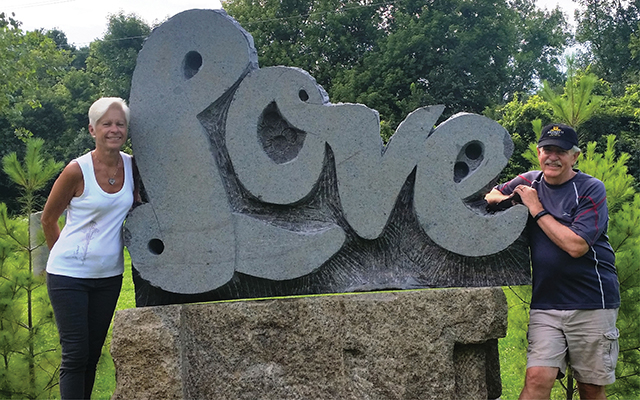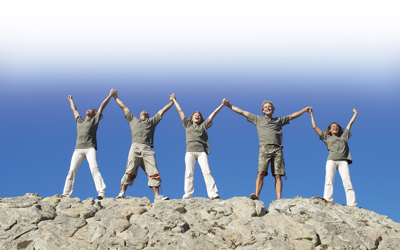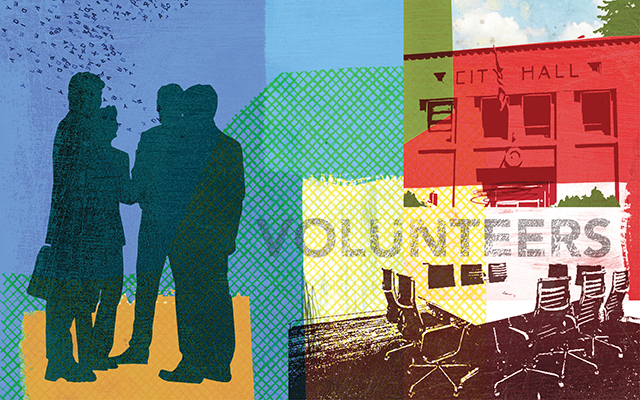I was plugging away at my 6:30 a.m. workout when a friend walked by and joked, “Hey, aren’t you supposed to be retired?”
It was true: At 68, I was two years into my retirement. “I come here to relax!” I responded. My morning workout is restorative, a time for me to get energized for the busy day ahead.
I began my early-morning fitness routine in my 40s, when my two children were getting older and I was spending less time running around after them. It helped me expend surplus energy. But once I’d established the habit, I realized that being fit allowed me to do so much more outside the gym.
Six days a week, I still get up and go work out. The benefits of that commitment allow me to live a fulfilling life, free of the limitations that plague so many older adults. Taking care of my own health has made my dream of an active retirement possible.
Redefining Retirement
As my 65th birthday approached, I began to think more seriously about retiring. I had worked full time for more than 40 years — 30 of those at a for-profit company before transitioning into nonprofit work. That organization was changing, though, and it seemed like a good time for me to consider something new.
I’d been preparing for retirement by saving money, but I hadn’t given much thought to what my life would look like after I left the workforce.
A stereotypical retirement, with days spent playing golf or bridge, seemed like the antithesis of who I was. I’d spent my whole life raising my children and focusing on work. I was afraid of being bored, or slowing down and becoming stagnant, or losing my hard-won health and vitality. I’d seen people retire and fall ill or grow disheartened from a lack of purpose.
I didn’t want that for myself. While I wanted a change, I didn’t want to do less — I wanted to do more.
I have always felt driven toward service, and I pursued that passion as much as I could while balancing career and family obligations. But in my nonprofit management job, I often felt I interacted more with paper than with people. I wanted more meaningful human connections and direct ways to make a difference. In the back of my mind, I thought about how I’d like to work with a variety of organizations to spread as much goodwill as I could.
The idea of combining my service mindset with new experiences appealed to me. That’s when I finally started to envision myself in my new phase of life.
“What Do You Do?”
At age 66, I left the workforce. The next day, I began reaching out to people I knew who were involved with volunteer work, and I set up some meetings with organizations that interested me.
One of my first meetings was with a pastor. He reminded me that one of the first questions people ask when they meet someone new is “What do you do?” I certainly didn’t want to be caught unable to answer.
I knew I didn’t have to define myself by a particular position or organization, but it was challenging to make that shift. The pastor impressed upon me that people don’t actually want to know what you do, they want to know how you feel about what you do.
Sure enough, when someone asked me this question a few weeks later, I was a little rattled. But thanks to that meeting, I had my elevator pitch ready. “I’m retired,” I responded with a smile, “and I’m getting involved in a variety of volunteer organizations.”
I began helping to teach kindergartners to read, which is still my favorite volunteer job because I get to share my love of books. Plus, there is nothing more rewarding than walking into a classroom and being embraced by a roomful of children.
Once I settled into the rhythm of going to the school twice a week, I began looking for ways to fill my other free days. I picked up one day a week at an adult-education program, where I help immigrants with reading and writing. I love learning about different cultures and hearing stories from people I otherwise never would have met.
I also provide monthly articles to three nonprofits: One promotes children’s literacy, another offers mentoring for high school students, and a third encourages socializing for the elderly. I enjoy having the opportunity to use my writing skills, which keeps my mind sharp and fills me with creative energy.
When I imagined what volunteer work I might do in retirement, I never expected I would regularly visit a prison. But every month, I meet with a woman who is incarcerated at a nearby correctional facility. My role is to be a good listener and reinforce her goals for the next step in her life, like working on her GED. She’d never had a visitor before I started mentoring her; she calls me her link to the outside world.
Fit to Serve
This lifestyle of service works for me because I’ve carefully blended it with my own passions. I’m always challenging myself to be creative in finding new ways to serve others.
When I’m not officially volunteering, I’m usually “scattering kindness,” which can involve anything from showing appreciation to police officers to leaving coins around a wishing well for children to find. These spontaneous gestures also keep me active, allowing me to explore my community; I easily meet my daily 10,000-step goal.
While my commitment to fitness has kept me physically healthy, the joy I get from volunteer service keeps me mentally and emotionally fit. I met a woman at a shelter who said to me, “You didn’t just give me food, you gave me dignity.” Those are the moments that sustain me.
I’ve also been able to balance my passion for service with my family obligations. My husband still works, but we also enjoy volunteering together. Once every month, we serve meals at a homeless shelter. We also host bingo nights at another shelter, which is a fun night out for us. This time together is one more way to build on our relationship while we “pay it forward” out of gratitude for the blessed life we’ve lived.
I’d like to continue doing this work for the rest of my life. My mom is 93 years old and still lives on her own, so I believe I have many good volunteering years to come. Her longevity motivates me to stay fit so I can make the most of every year I get.
Tell Us Your Story!
Have a transformational healthy-living tale of your own? Share it with us at ELmag.com/myturnaround.
Karen’s Top 3 Success Stories
- Get outside your comfort zone. “I’ve been able to create new relationships with people I otherwise never would have met,” Karen explains. “It’s really expanded my world.”
- Be creative. Think beyond typical ways to serve and try things you haven’t done before. “Volunteer work never has to be a long-term commitment unless you believe the fit is just right,” she says.
- Get social. Karen recommends networking to find volunteer opportunities, just as you would for a career move. Organizations that help make these connections include www.volunteermatch.org and www.allforgood.org.




This Post Has 0 Comments